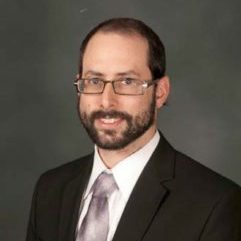After going the various steps of Teshuva, the Rambam explains the ways of a Baal Teshuva. He writes that a Baal Teshuva should be involved in constant prayer, Tzedaka and ensuring that past Aveiros will not be repeated. A Baal Teshuva should also change his or her name as if to say ‘I am a different person’. And a Baal Teshuva should consider galus, because Galus is conducive to humility.
Based on this idea, the Yalkut Shimoni writes that the reason why Succos is in Tishrei and not after Pesach is because it is possible that our decree after Yom Kippur was to be exiled. By leaving our homes to enter our Sukkah’s it as we were exiled to Babylon.
On the surface this makes a lot of sense, after all we are leaving our homes to be in a wooden shack. Even the most fancy Sukka is prey to the elements because there is no roof, yet the Sukka remains intact and dry only by the grace of G-d.
However, upon further thought, this is strange. It is a Mitzvah to decorate the Sukkah. It is forbidden to bring earthenware pots and pans into the Sukkah because it does not look nice. If the idea here is Galus, One would imagine that exile would mandate that we have Spartan lodgings without all of the creature comforts. Yet the Gemara tells us time and time again, teishvu k’ein Taduru, treat it as you would your home.
Reb Sheinberg takes very practical approach to answer this question. He explains that the idea is to leave our “dwellings of permanence” and work with something different, something new. Sukkos is a time to begin anew and assess everything that we do. Of course, Just rethinking whether we really like our dining room set or insulation may not change our lives, but once we get into the habit of leaving our Diras Keva, our “state of permanence”, we will have a tool to use for life.
Perhaps we can take this idea one step further: although our main purpose in this world is to prepare for the next world, we are also capable of bringing holiness into the world we live in.
On Succos we are given a great opportunity. The Mitzvah of sukkah does not apply to just eating and drinking; everything we do should be done in the Sukkah. Everything we do becomes a Mitzvah. That is why, unlike Pesach, we make a leisheiv Besucca daily. According to many, even just walking into the Sukkah is a mitzvah and worthy of a bracha. This is our training ground for incorporating Hashem in our lives for the remainder of the year and forever.
Reb Ahron Kotler writes that we spend Rosh Hashana and the ten days following declaring G-d’s kingship in the world and the great kindness and benevolence that he affords us. After Neilah we are excited and ready to rejoice in the presence of G-d. We want all of our actions to be reflective of this feeling of closeness. We build ourselves a Sukka where we are constantly doing Mitzvos and coming as close as we can to the bliss of G-dliness. We are then able to stretch that holiness throughout the year by appraising every one of our actions and effectively building a sukkah for ourselves in which everything we do is the will of G-d.
Until Shemini Atzeres we quote Dovid Hamelech’s praise for Hashem: “for you hide me in your Sukkah and protect me in its shade”. May we be Zoche to experience the Simcha and closeness to Hashem that is inherent in the Sukkah.

0 Comments